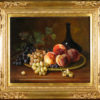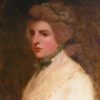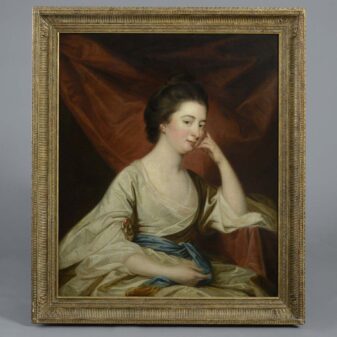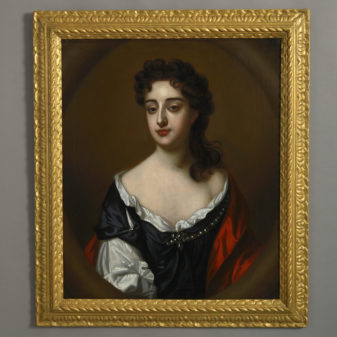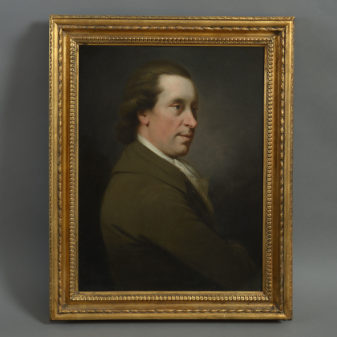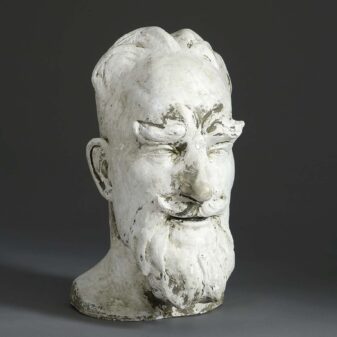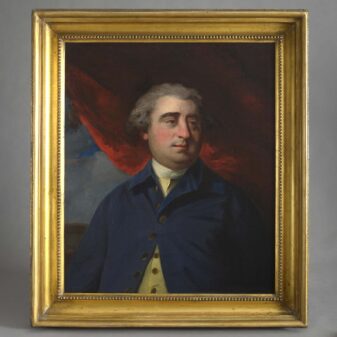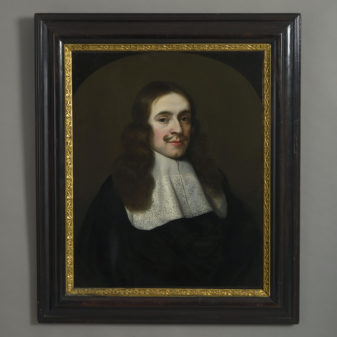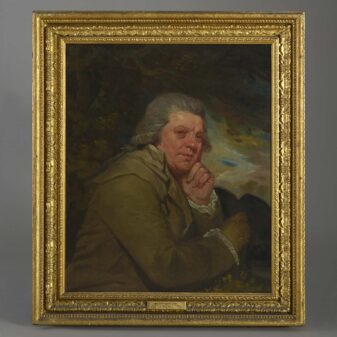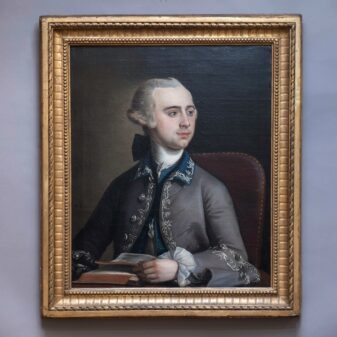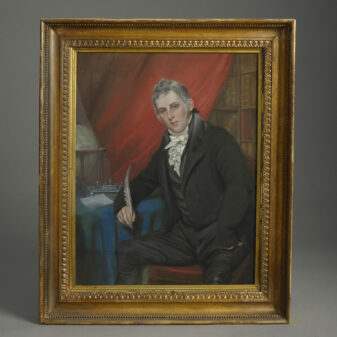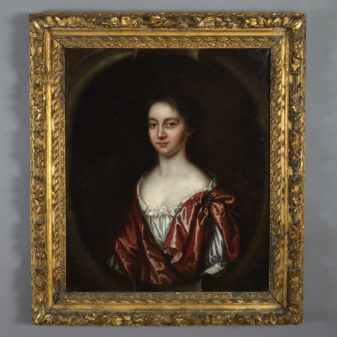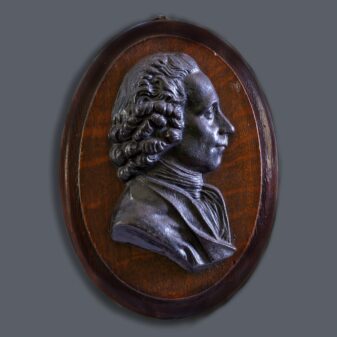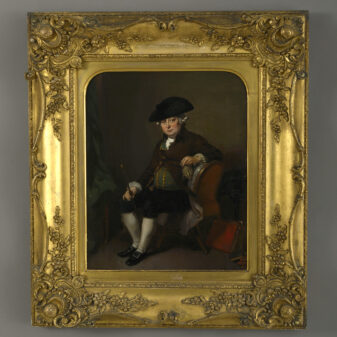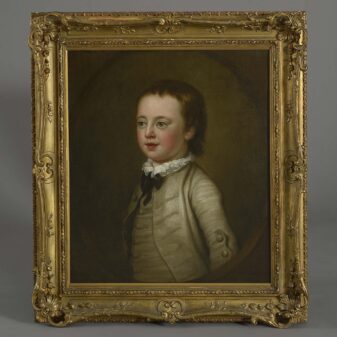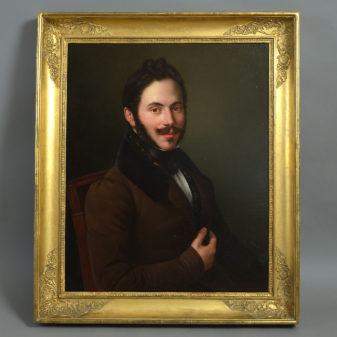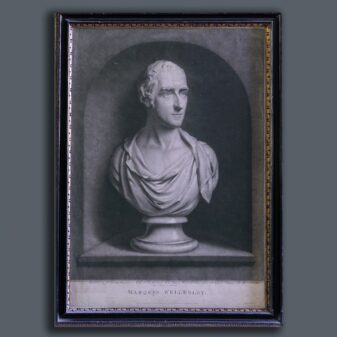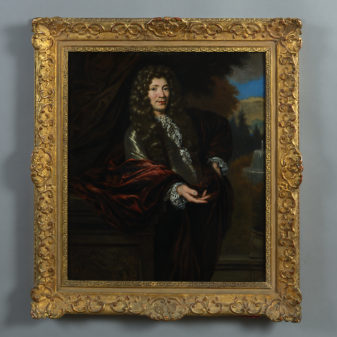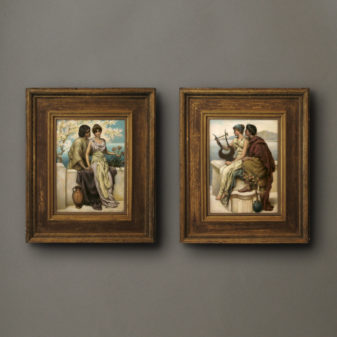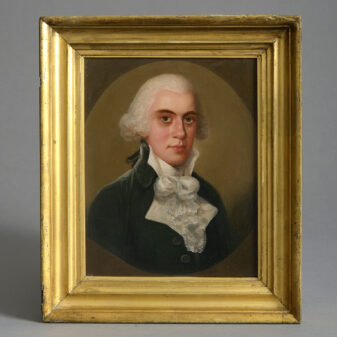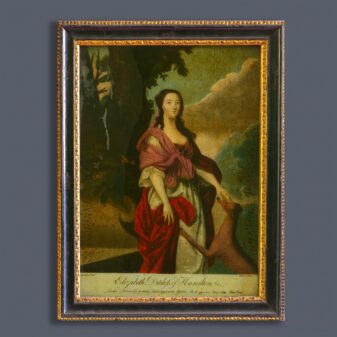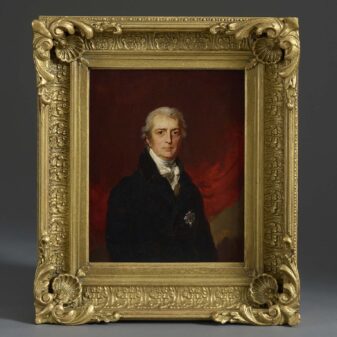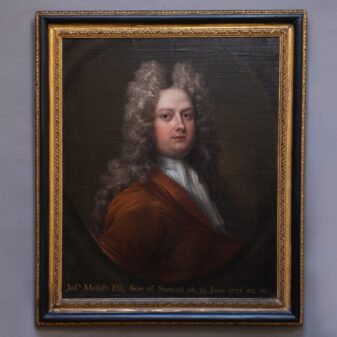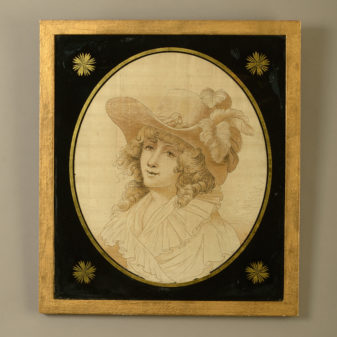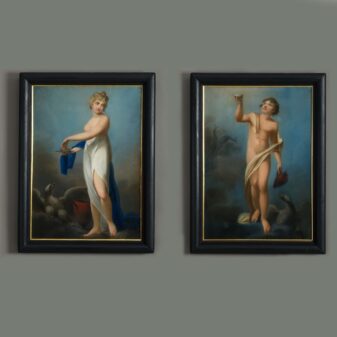Portrait of a Man Wearing an Armour Breast Plate and Red Jacket Believed to be Daniel Parke (1669-1710)
£16,500
SOLD
JONATHAN RICHARDSON SENIOR (1664-1745)
Jonathan Richardson Senior was born in London. His father died when he was a child and he was apprenticed to a scrivener. The retirement of his master enabled him to be released before the completion of the apprenticeship and he decided to take up painting.
He went on to study under John Riley from 1688 until Riley’s death 1691. He became Riley’s heir and married his niece.
Most of his known works date from after 1700, and his style was halfway between Riley and Kneller. He went on to establish an extremely successful practice and owned an important collection of old master drawings (many of which were bought after his death by Hudson, then Reynolds and finally by Lawrence). He published The Theory of Painting, 1715 which influenced E. Burke’s theories on the sublime; and, with his son, an account of the works a tourist should see in Italy, 1722 – both works were immensely influential, inspiring Reynolds with the desire to become a painter, and providing him with a clear vision of the foundation of an English School.
Richardson helped found the 1711 Academy.
Among his pupils were Jonathan Richardson Jnr, George Knapton, Thomas Hudson (who married one of his daughters), Giles Hussey and John Michael Williams.
In 1720 Richardson charged 20 guineas for a head portrait, 40 guineas for a half-length and 70 guineas for a full-length portrait.
He retired from painting in 1740.
Richardson died in London on 25 May 1745 and is buried in the churchyard of St George the Martyr, Bloomsbury.
Waterhouse writes, “His works are sound, solid, good likenesses, and unpretentious”.
Works Represented: National Portrait Gallery London; Scottish National Portrait Gallery; City Estates Committee, Bristol; Manchester City Art Gallery; Society of Antiquaries; The British Museum; College of Arms London; Warwick Castle.
Daniel Parke was a Virginia politician who gained his first public office at age nineteen, when he was elected to the House of Burgesses for James City County (1688). By age twenty-six, he had acquired a seat on the governor’s Council (1695–1697). He relocated to England in 1697. He served as an aide-de-camp to John Churchill, Duke of Marlborough, during the War of the Spanish Succession (1701–1714), and carried news of Marlborough’s victory at the Battle of Blenheim to Queen Anne in 1704. The queen rewarded Parke with a governorship in the Leeward Islands, a small island chain in the Caribbean, which he assumed in 1706. But Parke’s accomplishments masked a darker side. Arrogant and at times violent, he became estranged from his wife and children in Virginia, had a number of extramarital relationships, and fathered offspring out of wedlock. Ultimately, Parke’s sexual improprieties contributed to his political undoing. Residents of the Leeward Islands complained that he had ‘debauched’ many of their wives and daughters, in addition to exceeding his authority as their governor; a bloody riot ended Parke’s governorship, and his life, on December 7, 1710, when an angry mob pulled him from his home and murdered him.
(Framed size)

